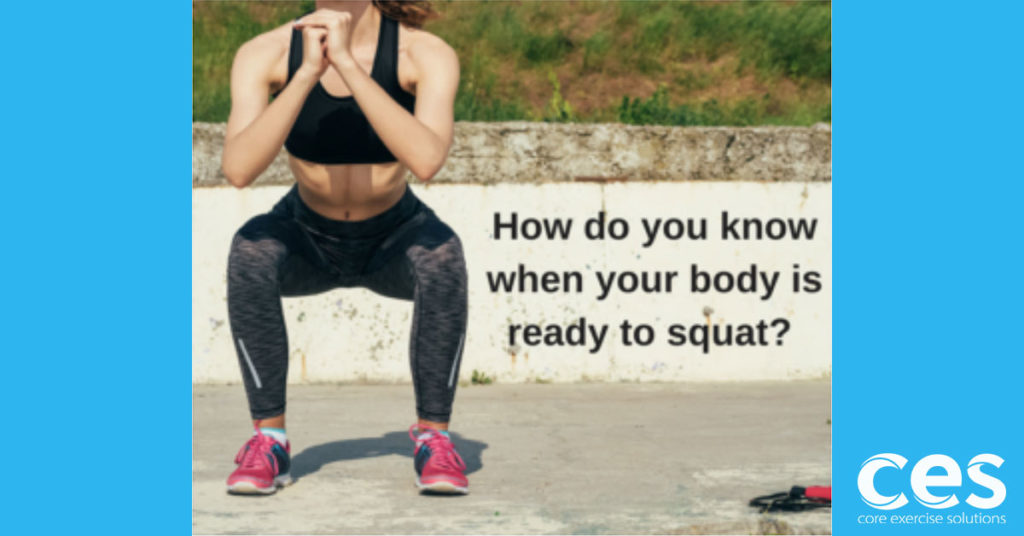Easy! You’re ready now.
The question at hand is not whether you’re ready. The real question is how many, how deep, and with how much weight? You are ready to squat now, you just might need to play around with the details of the execution a bit.
I see a lot of women with pelvic floor dysfunction (prolapse and leaking) and diastasis and I keep hearing over and over again that their healthcare provider said “no squats”.
Me: Well, did they meet you at your car and help you get out? Did they allow you to sit in a chair in the waiting room? When they called your name, did they come to assist you out of the chair?
No?
Well then, you did several squats just getting to your appointment. Congratulations! Your body is ready to squat!
When we give blanket instructions like “no squats”, women become afraid of moving. Even getting on and off the toilet (hello- that’s a squat too!) This creates fear and hinders healing. I have no doubt that in the mind of the person that said “no squats” they are thinking about someone going to the gym, loading on a bunch of weight and squatting until their face turns purple. Which makes that blanket statement extremely misleading.
Squats are awesome for the body. They help lengthen and strengthen the glutes. They utilize core strength to help stabilize the pelvis. They lengthen the pelvic floor and help improve pelvic floor function. Squats can be a key piece of the treatment process. They just need to be done right.
So, instead of saying, “no squats,” let’s say, “let me see your squat.”
- Check knees for caving in
- Check back for over rounding or over arching
- Check glutes for lengthening or bottom tucking
- Check for bearing down on the pelvic floor
- Check for how the abdomen and diastasis load- is there doming or separating and dipping in?
- Check for breath holding or shallow breathing
A few bodyweight squats can tell a lot about how a person uses and loads their body. If there are several things going wrong, this could be an aha moment for why the patient’s diastasis or pelvic floor issues worsen as the day goes on. This is something to fix and work on since squats are a part of everyday life.
How is a mom supposed to get on and off the floor to play with her child if she can’t lunge or squat?
Once the squat looks good, it can be a healthy part of core and pelvic floor recovery.
Based on history and current strength levels, not everyone will be at the same starting point. One person may need to hold on to something and do an assisted squat, working on form, core and pelvic floor loading for only a few reps before resting, whereas someone else might be able to hold a weight and handle a full squat. The important point is that you meet your body where it’s at and you work on getting stronger.
When we become afraid to do anything, it causes weakness and decreased healing. So, instead of being afraid, get educated! Learn what your body needs and be in charge of your own recovery process. Question everything and trust yourself. It may be hard and seem overwhelming in the beginning, but once you have that knowledge, no one can ever take it away from you.
----
Are you a fitness or healthcare provider wanting to learn more about helping women with recovery? Check out the Postpartum Corrective Exercise Specialist program for more information on diastasis recti, pelvic floor, posture correction, SI joint pain and back pain.


